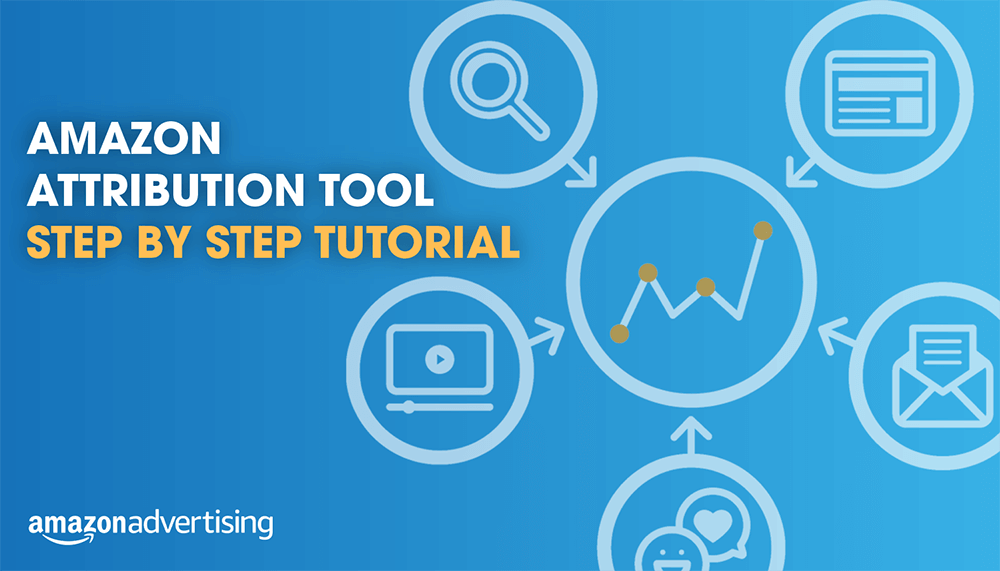For a considerable amount of American shoppers, Amazon is their preferred online retailer. Brands who sell on Amazon stand to gain a great deal by examining the efficiency and influence of non-Amazon traffic sources on their sales and performance on Amazon. Amazon launched a free measurement tool called Amazon Attribution, which allowed for this transparency.
Brands that sell on Amazon can use the data provided by Amazon Attribution to increase their advertising spending outside of Amazon in order to increase sales. It provides the chance to develop multi-channel, complete funnel marketing strategies to help all of our clients reach their sales targets.
Amazon Attribution: What Is It?
Brands who sell on Amazon may get sales effect research across media channels outside of Amazon using Amazon Attribution, a free analytics measuring tool. Brands can track how well their display, search, social, video, and email campaigns perform in terms of people finding, examining, and purchasing their products on Amazon thanks to this official solution.
Advertisers and companies may use Amazon Attribution’s on-demand reporting to get the information they need to improve their media campaigns and increase product sales. This offers a thorough understanding of the ways in which every marketing strategy influences a brand’s Amazon shopping behaviour.
Amazon Attribution Is Available To Whom?
Vendors, KDP writers, and professional sellers registered in the Amazon Brand Registry who run advertisements through means other than Amazon can use Amazon Attribution. Agencies with clients who sell goods on Amazon can also use it. Tool providers that have merged with the Amazon Ads API or the self-service interface are the two ways to obtain Amazon Attribution measurement. We will also discuss about Amazon brand registry in this post.
The Operation of Amazon Attribution
Orders and revenue from traffic coming from outside of Amazon and being directed to an Amazon.com listing are tracked and reported by Amazon Attribution. Clicks and Amazon conversion data, such as Impressions, Detail Page views, Add to Carts, and transactions per ad channel, are included in the reporting metrics for Amazon Attribution. Reports are easily accessible within the console or can be downloaded. Measurement, Optimization, and Planning are the three main areas into which the advantages of Amazon Attribution can be broadly classified.
Quantify
Amazon Attribution is fundamentally a technique for measurement. It takes away the mystery of which non-Amazon driven traffic sources are generating the best results, giving advertisers and brands the whole view they need to design all-encompassing, well-thought-out campaigns. The impact analysis of Amazon sales shows how well each channel performs in reaching the intended goals.
To put it plainly, Amazon Attribution makes it easier to avoid attempting to piece together which marketing initiatives are successful, which aren’t, and where you should focus more or less on attention and advertising spend in order to achieve your objectives.
Enhance
On-demand reporting from Amazon Attribution makes it possible to make immediate adjustments during flight. You can experiment with adjusting budgets if some channels show themselves to be high or low performers. Keep trying until every dollar you spend on advertising goes to the places where it will have the greatest effect on your revenue.
Arrange
Planning future marketing campaigns that can optimize return on investment is made easier by routinely analysing channel performance and pertinent Amazon audience segment details. Take into account every factor that could have affected your conversion stats, such as the messaging style and any illustrative or instructional materials. Understanding what is and isn’t working will be made easier with performance data that can be examined at the ASIN, audience, creative, and keyword levels.
Amazon Brand Registry
It makes sense to wonder why you would need to drive outside visitors to your listings given that Amazon is the leading online marketplace in the United States. Let’s look at a few justifications for thinking about putting an off-Amazon advertising plan into practice.
The benefits of selling on Amazon are abundantly evident, as over 60% of US consumers who were questioned stated that they start their search there. Still, a significant portion of customers begin their purchasing trip somewhere else, with search engines coming in a close second.
By using non-Amazon channels to drive attention to your product listings on Amazon, you are reaching a wider audience of potential buyers, almost everyone.
Obtain a benefit over competitors
Driving traffic from outside sources to Amazon gives you an edge over rivals. You drive visitors directly to your listing or store rather than having it compete with other products for attention on the Amazon SERP.
Receive a Reward from Amazon
Amazon has a special program called Brand Referral Bonus (BRB), which is currently only available to US Seller Brand Owners. BRB pays advertising for conversions that were facilitated by Amazon Attribution.
Brand registered marketers who are engaged in the BRB program can receive a credit equal to 10% of the qualifying sales assessed using Amazon Attribution by sending off-platform traffic to their Amazon listings. The platform referral fees for that transaction are credited with this bonus or incentive, lowering the total cost of selling on Amazon.
Additionally, a lot of sellers think that by providing them even more traffic, Amazon pays them for bringing in outside visitors to Amazon.com. It makes sense even though it hasn’t been proven. Sellers are essentially promoting both themselves and Amazon when they send outside traffic to the online retailer. This benefits Amazon financially and commercially, which may improve the brands or products natural placement.




